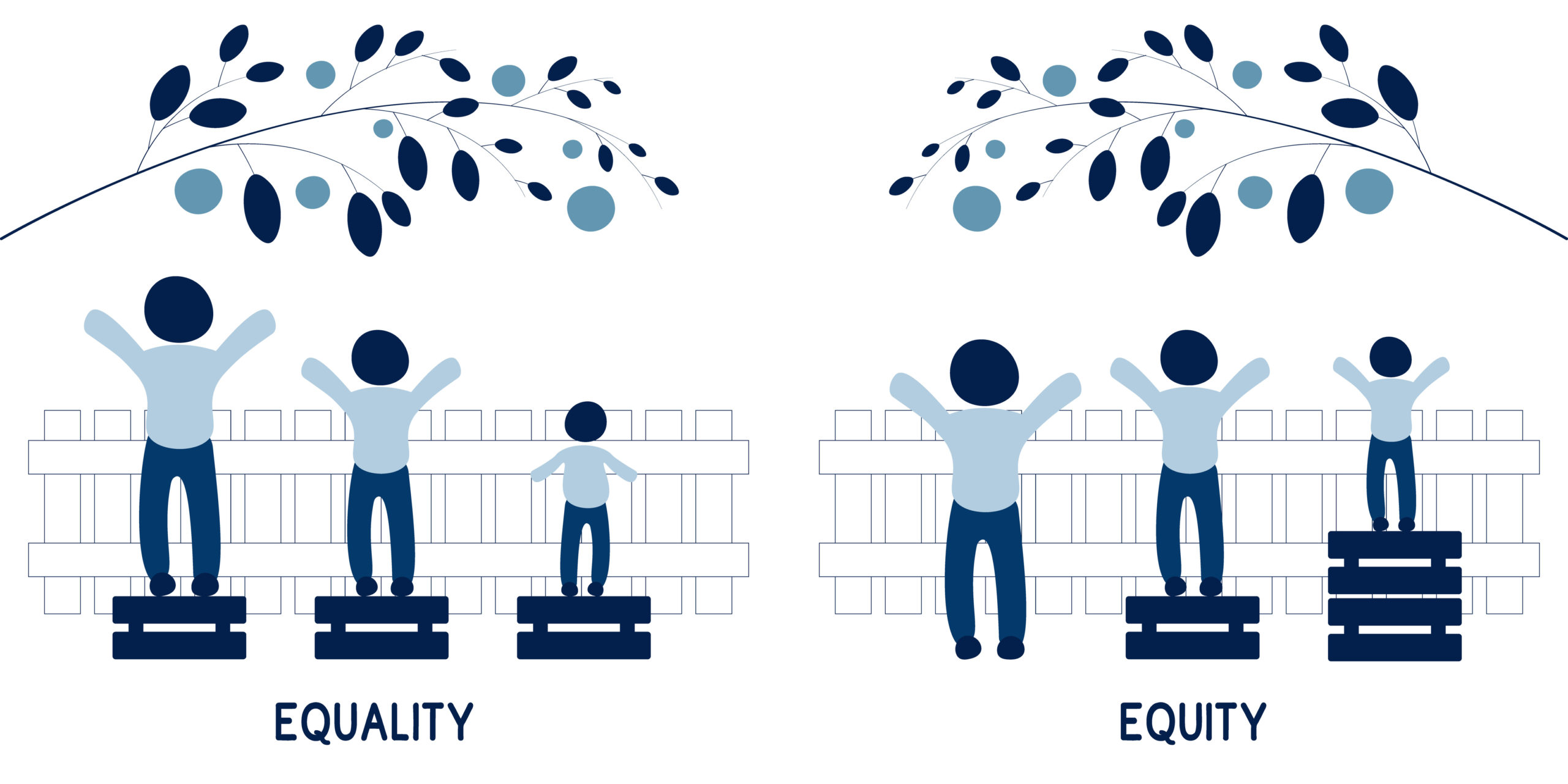Insights
all insights
Equality vs. Equity
Imagine you’re at your family’s Thanksgiving celebration and just as grandpa is getting ready to carve the turkey, your uncle says, “Let’s make sure everyone gets an equal share”. It should sound like a strange request considering you likely have people of all ages and consumption abilities seated around the table.
What your uncle actually desires isn’t equality but rather equity.
Equality would mean that everybody…father, mother and children – would get a piece of the same size.
Equity, on the other hand, would mean that they take the sensible option, and divide it according to their needs, i.e. larger sized pieces for the adult and smaller pieces for the children.
When we talk about equity, we refer to the qualities of justness, fairness, impartiality and even handedness.
When we talk about equality, we are talking about equal sharing and exact division.
Equality alludes to the identical apportionment where dealings, values or qualities are concerned.
Equity represents fairness, or what may be termed as the equality of outcomes. This involves factoring in aspects of the system that have put particular groups at a disadvantage.
A great way to illustrate the difference between the two would be as follows…
Imagine that you have the pleasure of attending a Broadway play. The sights, the sounds, the drama. There are so many factors present in making your experience a great one.
Each character has a unique voice, vocal inflections, non-verbal cues, and gestures that comprise the whole of who they are and what they contribute to the story.
Whether major or minor, each piece is important and evokes emotion in you. When these things come together, you have a wonderful work of art that you aren’t likely to forget anytime soon.
Now imagine a different scenario. You arrive at the theater but instead of being let in, you are simply handed a transcript of the play and told that you will be allowed to read it while sitting in the lobby. The explanation is that this is an “equal” experience because you have every word that will be said in the play. You aren’t missing out on anything.
We can laugh at the sheer ridiculousness of this because we know that making an equivalent experience is not just about words. But often times, this is what happens when equality is mistaken for equity. .
Therefore, although seeming to be similar, equity and equality are indeed very different and these differences can drastically alter outcomes.
Here are DSU, we recognize that accommodations for Deaf individuals are not one size fits all and therefore, every solution we work toward is an equitable one.
Q&A
1. What is the difference between equality and equity?
Equality involves providing the same resources or opportunities to everyone, regardless of their individual needs. In contrast, equity focuses on fairness by allocating resources based on the specific needs of individuals to ensure equal outcomes.
2. How do equality and equity impact workplace accessibility?
In the workplace, equality might mean providing all employees with the same training or tools. Equity ensures that employees with different needs—such as Deaf or hard-of-hearing staff—receive accommodations like ASL interpreters, captioning, or assistive technology to perform at their best.
3. Why is understanding equity important in accessibility?
Understanding equity is crucial because it recognizes that individuals have diverse needs. By addressing these needs, we can create environments where everyone has the opportunity to succeed, rather than assuming that equal treatment leads to equal outcomes.
4. How does Deaf Services Unlimited approach equity in their services?
Deaf Services Unlimited emphasizes that accommodations for Deaf individuals are not one-size-fits-all. They strive to provide equitable solutions by tailoring services to meet the unique needs of each individual, ensuring fair access to communication and information.
5. What are practical ways to apply equity in everyday life?
Practical ways to apply equity include providing tools and support based on individual needs, such as captioning for videos, sign language interpreters for events, and accessible educational materials. These measures help ensure that everyone can participate fully and fairly.
